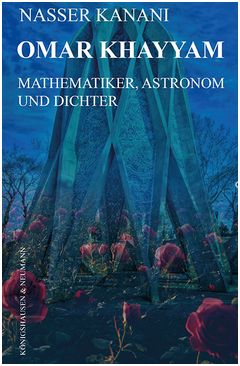Omar Khayyam. Mathematiker, Astronom und Dichter. Nasser Kanani. [S.l.], Köningshausen & Neumann, 2024. 466 p. ISBN: 9783826090257
Omar Khayyam (1048–1131) verfasste Abhandlungen über Mathematik, Astronomie, Physik und Mechanik sowie Theologie, Philosophie und Musiktheorie. Als Mathematiker befasste er sich mit kubischen Gleichungen und fand als Erster ihre Lösungen mithilfe von Kegelschnitten. Im Bereich der Geometrie widmete er sich dem Parallelenpostulat und gelangte zu einem Ergebnis, das die Entdeckung von nichteuklidischen Geometrien einläutete. Ferner gelang es ihm, als Erster die Binomialkoeffizienten zu bestimmen, die später zur Bewältigung zahlreicher Probleme der modernen Mathematik beitrugen. Als Astronom entwickelte er den weltweit genauesten Kalender. Dass er sich neben seinen bahnbrechenden wissenschaftlichen Arbeiten auch mit der Poesie beschäftigte, verheimlichte er jedoch seinen Zeitgenossen, und dies aus gutem Grund: Der damals vorherrschende religiöse Fundamentalismus duldete keinerlei glaubenskritische Äußerungen, schon gar nicht aus dem Munde eines Mannes, der als Autorität im islamischen Recht galt. Erst Jahrhunderte später erfuhr die Nachwelt von seinen Vierzeilern, Rūbā’ijāt, die in verschiedenen Quellen auftauchten. Nachdem sie Mitte des 19. Jahrhunderts in englischer Sprache erschienen, wurden sie als die schönsten Vierzeiler der Weltliteratur gefeiert. Die Übersetzungen seiner Vierzeiler liegen nun in fast allen Sprachen der Welt vor und sind ein Beweis für die anhaltende poetische Wirkung Khayyams und begründen auch die Weltgeltung der persischen Poesie.

